Bud Break on the Farm
On March 20th we celebrated the Spring Equinox however we haven’t really felt or seen spring until this past week. As soon as the snow melts and the farm is still dormant, we hit the ground running prepping for the growing season ahead. Which brings me to discuss this week’s Blog- Bud Break.
This is an important event on the farm and is a crucial stage in the growth cycle of both apples and wine grapes. It is the time when the buds on the branches of these plants begin to swell and eventually open up, revealing the new growth inside. This process is triggered by the warming temperatures of spring and is a sign that the plants are coming out of their winter dormancy.
In apples, bud break typically occurs in early to mid-spring, depending on the variety of the apple tree and the local climate. This year, I saw our first sign of bud break in the apples on April 12th.
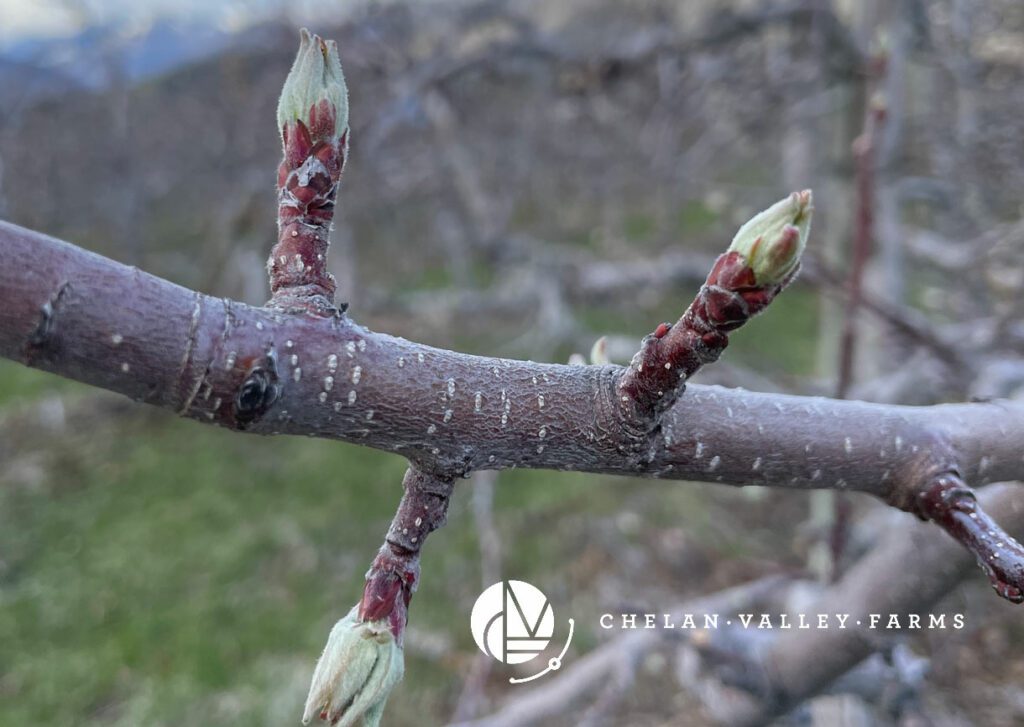
Apple buds swelling
As the buds swell, they become more visible on the branches, and small green leaves start to emerge. This is a critical time for apple growers, as the new growth is vulnerable to frost damage, which can severely impact the crop yield.
In wine grapes, bud break also occurs in the spring, usually in March or April, depending on the region. This year it has been cooler than “normal” and we are not seeing any visible changes yet. Bud break is a really exciting time in the grape vine life cycle. It is the first visible sign of the new growing season and is an important indicator of the timing of other critical stages, such as flowering and fruit set. Veraison (color change) will come as the next milestone in the grape life cycle before harvest. The timing of bud break can also impact the quality of the grapes, as an early bud break can result in a longer growing season and potentially better fruit.
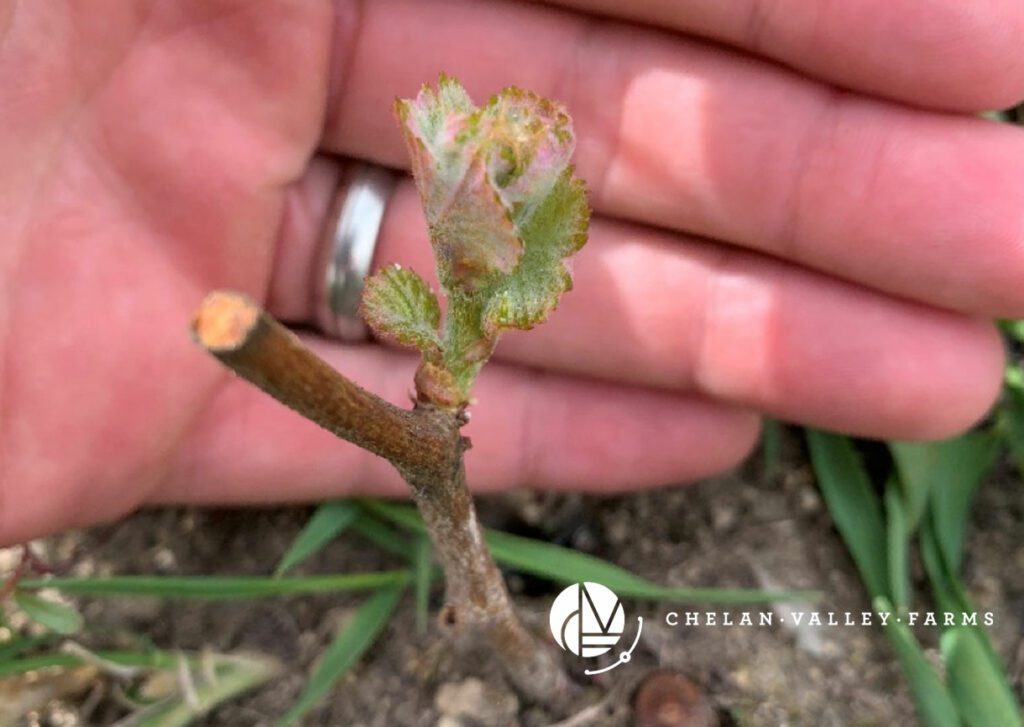
A young grape plant just opening up – bud break.
As a small farmer, it is essential to understand the timing and process of bud break in both apples and wine grapes. Monitoring the weather and other environmental factors can help you anticipate the timing of bud break and take appropriate steps to protect your crops from frost damage or other threats. For example if bud break occurs and then we have a late freeze, the entire crop can be lost without preventative measures being in place. Our vineyard is located on a north facing slope overlooking Roses Lake. The Lake Effect (from Lake Chelan) can help keep the vineyard a bit warmer, protecting it from a late freeze. Granted this is all relative depending on how cold it gets in the spring as we do live in a mountain climate. We have not seen any signs of bud break in the vineyard at this point. It is supposed to reach 80 degrees Saturday so we are hopeful we will have some visible signs of bud break soon.
Another factor determining the timing of bud break is variety. Either apple or wine grapes bud break timing is affected by the variety. Pinot Noir will push buds at a different time than Chardonnay and Sauvignon Blanc. Same in apples – gala is ahead of Cosmic Crisp®. The different bud break timings also play through to flower timing and harvest timing. Thus, we typically pick Sauvignon Blanc ahead of Pinot Noir and Chardonnay. In apples we pick gala first then Golden Delicious, then Cosmic Crisp® then EverCrisp®. The great thing about the way mother nature has lined things up – we don’t have to pick our Sauvignon Blanc the same day we pick Pinot Noir.
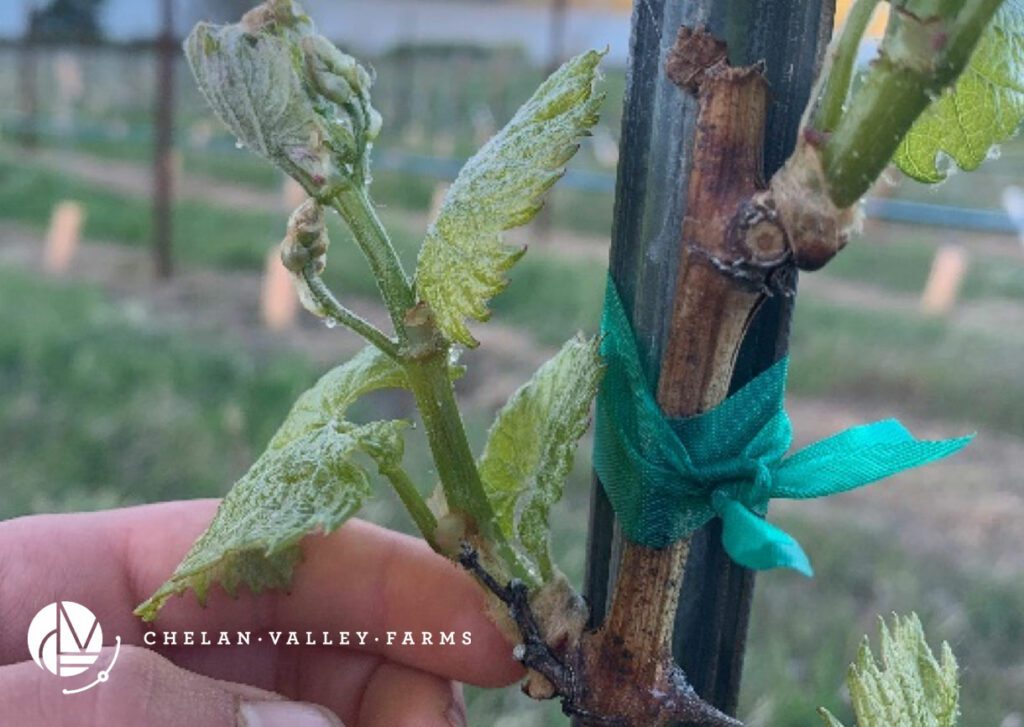
The tender shoots after bud break. Sensitive to frost.
One way to monitor bud break is to keep track of the growing degree days (GDD) in your area. GDD is a measure of accumulated heat units that can help predict when bud break will occur. According to AgWeatherNet, in the Chelan Valley we have 22 Growing Degree Days so far in 2023. For comparison, this same date in 2011, we had accumulated 1.8 GDD. In 2020, we had reached 101.8 GDD and in 2021, we had accumulated 88.7 GDD. In 2022 it was a slow cool Spring accumulating 12.9 GDD by April 27. You can use this information to plan your pruning, fertilizing, and pest management strategies. This is a handy tool no matter if you have a garden in your backyard or have a bigger production farm.
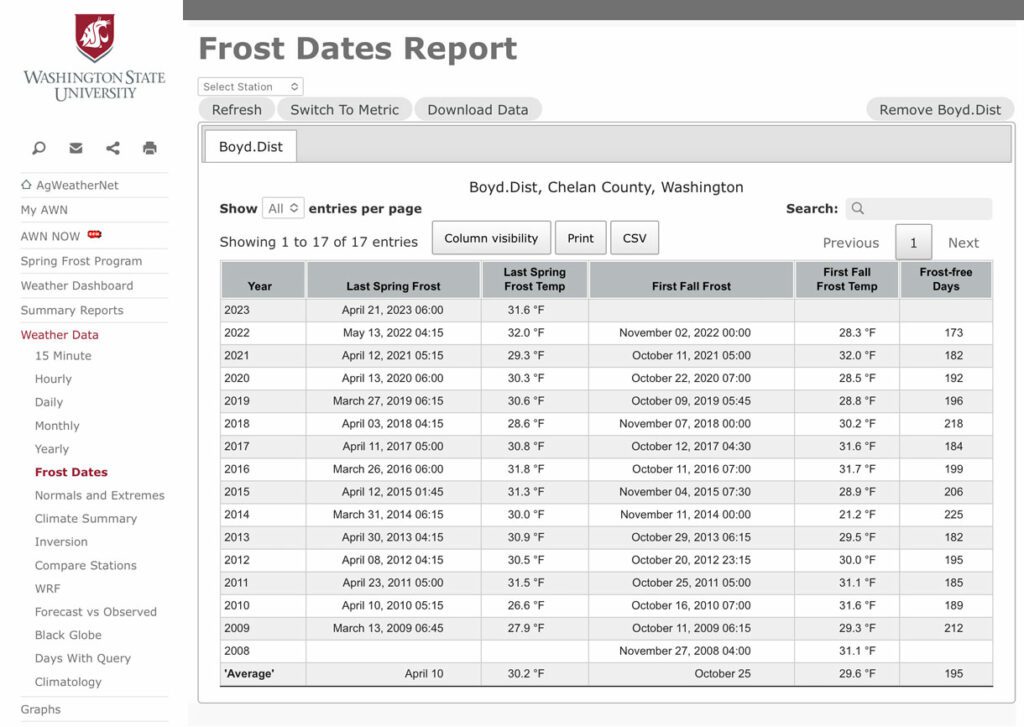
Another helpful tool from AgWeatherNet.
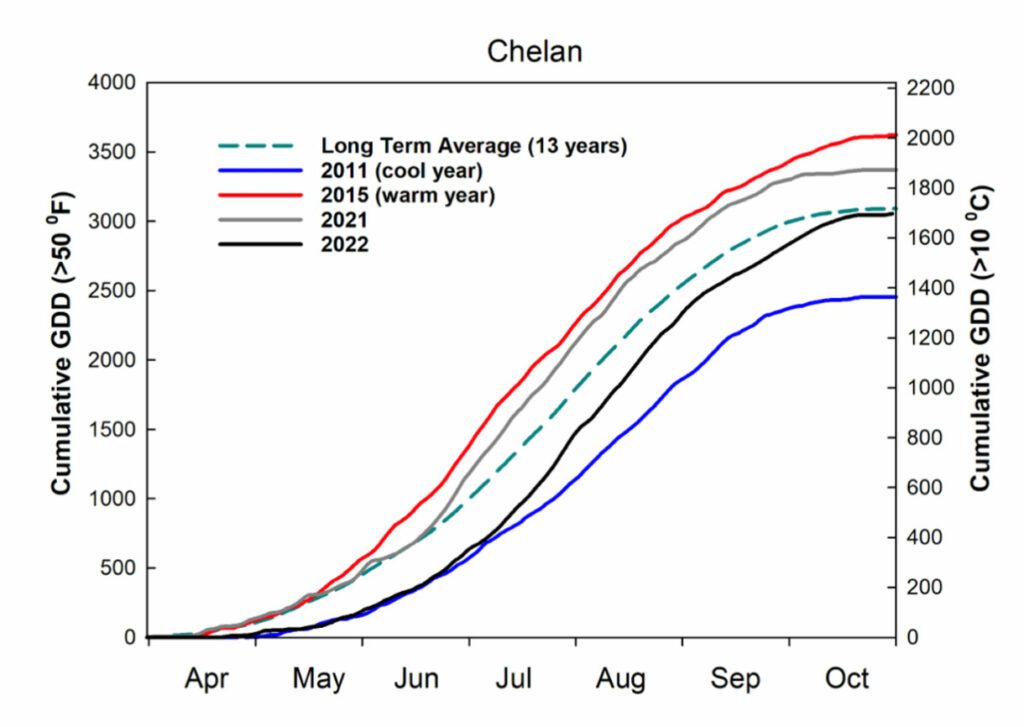
Example from AgWeathernet. 2023 isn’t pictured but we only have 22 GDD’s, so it barely registers on the graph.
It’s also important to note that bud break can be affected by various factors, including soil type, irrigation, and disease pressure. Therefore, it’s crucial to consider all of these factors when monitoring bud break and planning for the growing season. Another useful tool that we use is Green Cast. It is an online tool that shows weathers graphs and compares with previous years.
In summary, bud break is a big milestone on the farming calendar. It is a critical stage in the growth cycle of both apples and wine grapes. Understanding the timing and process of bud break can help farmers like ourselves anticipate and plan for the upcoming growing season. As Spring arrives and the leaves start appearing on the trees and vines, we hope this gives you a better appreciation of the importance of this stage in the growth cycle of these crops and become better-informed. Thanks for reading. Cheers to a good growing season ahead!
Thanks for following along. We’ll share shots when we see bud break in the vineyard… likely on Instagram. – Jeana





Your posts are so interesting and informative. I was relieved to see our last frost date for this year.
Thank you so much for the comment. So sorry this one slipped past us. Thank you for following along!
Absolutely great article and so educational on this subject that I just took for granite. Thank you and here’s to a great 2023 harvest